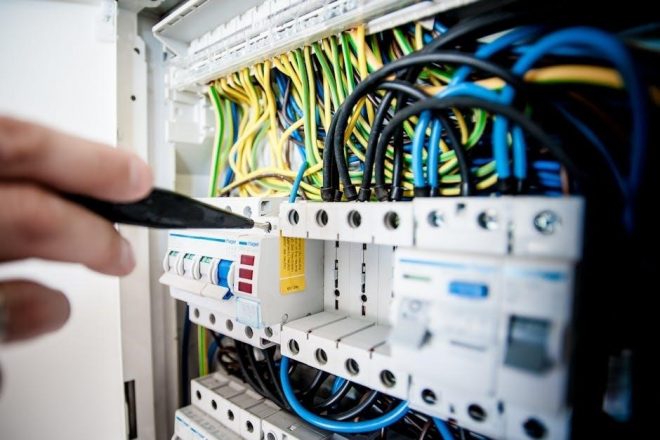Bitspower fans are high-performance cooling solutions designed to enhance computer system efficiency and thermal management. Proper installation ensures optimal airflow‚ reducing temperatures and improving overall system reliability.
1.1 Overview of Bitspower Fans
Bitspower fans are high-quality cooling solutions designed for optimal performance and reliability in computer systems. Available in various models like the Griffin 120‚ Notos 120‚ and NJORD 120‚ these fans offer advanced features such as high airflow rates‚ PWM control for adjustable speeds‚ and customizable RGB lighting. Engineered for silent operation and durability‚ Bitspower fans are ideal for both entry-level and high-performance systems. Their sleek designs and robust construction ensure efficient cooling‚ making them a popular choice among PC enthusiasts and builders. Whether for case ventilation or radiator cooling‚ Bitspower fans deliver consistent performance and long-lasting reliability‚ enhancing overall system efficiency and user satisfaction.
1.2 Importance of Proper Installation
Proper installation of Bitspower fans is essential to ensure optimal performance‚ reliability‚ and longevity. Incorrect installation can lead to reduced airflow‚ increased noise levels‚ and potential damage to the fan or other system components. By following the manufacturer’s instructions‚ users can avoid common mistakes‚ such as improper mounting or loose connections‚ which may result in malfunction or premature wear. Correct installation ensures that the fan operates within its design specifications‚ providing efficient cooling and maintaining system stability. Additionally‚ proper installation enhances aesthetics and cable management‚ contributing to a cleaner and more organized build. This step is crucial for maximizing the benefits of Bitspower fans and ensuring a seamless user experience.
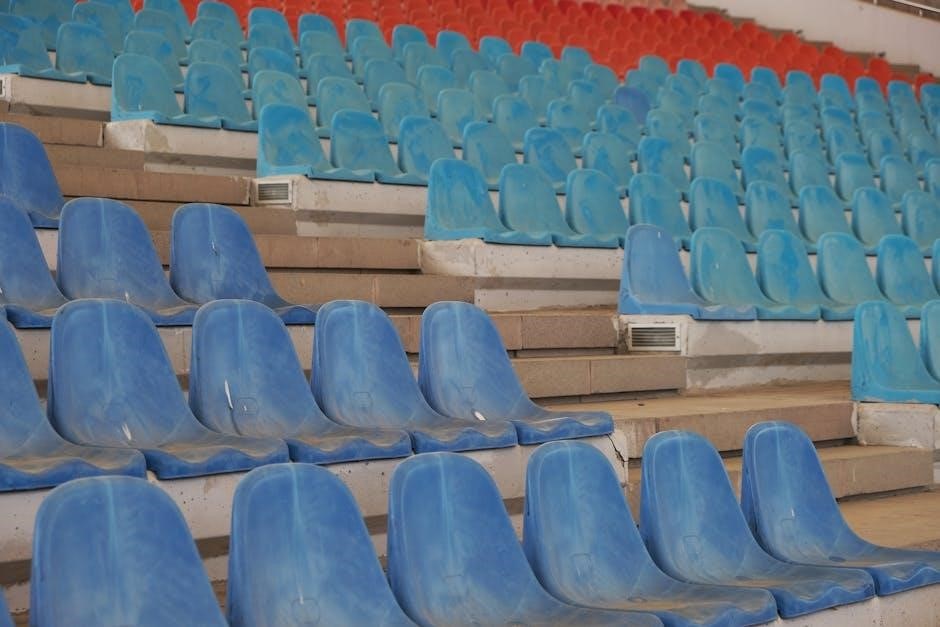
Preparing for Installation
Begin by unpacking and inspecting the Bitspower fan for any damage. Plan the installation location‚ ensuring optimal airflow and accessibility. Gather all necessary tools and materials beforehand.
2.1 Unpacking and Inspecting the Fan
Start by carefully unpacking the Bitspower fan from its packaging to avoid damage. Inspect the fan blades‚ cables‚ and connectors for any visible defects or damage. Ensure all components‚ such as screws‚ adapters‚ and manuals‚ are included. Check the fan’s technical specifications‚ including airflow‚ voltage‚ and RGB features‚ to confirm they match your system requirements. Verify the fan’s dimensions (e.g.‚ 120x120x25mm) to ensure compatibility with your case. Familiarize yourself with the provided accessories‚ such as the fan-adaptor for performance or silence modes. If any damage or missing items are found‚ contact Bitspower support immediately. This step ensures a smooth installation process.
2.2 Tools and Materials Needed
To install your Bitspower fan‚ you’ll need a few essential tools and materials. Start with a screwdriver (preferably Phillips-head) for mounting the fan to your case. Ensure you have the screws provided with the fan or compatible alternatives. Cable ties or clips will help manage wires neatly. If your fan includes RGB or PWM features‚ you may need additional connectors or hubs. A power source‚ such as a motherboard fan header or a separate power supply‚ is required. Finally‚ refer to the installation manual provided with your Bitspower fan for specific instructions tailored to your model. Having these tools ready ensures a smooth and efficient installation process.
2.3 Choosing the Optimal Location for Installation
Selecting the right location for your Bitspower fan is crucial for maximizing cooling efficiency and maintaining a balanced airflow within your system. Common installation spots include the front‚ top‚ or rear of the case‚ depending on your setup. Front-mounted fans are ideal for intake‚ bringing cool air into the system‚ while top or rear fans often serve as exhaust‚ expelling heated air. Consider the airflow path‚ cable management‚ and aesthetic preferences when deciding. Ensure the fan is positioned to avoid obstruction and aligns with your case’s venting design. Proper placement ensures optimal cooling performance and minimizes noise. Always check your case’s compatibility with the fan size and type before finalizing the location.

Understanding Fan Specifications
Bitspower fans feature advanced specifications like high airflow (up to 78.15 CFM)‚ low noise‚ and PWM control for precise speed adjustment‚ ensuring optimal cooling and system stability.
3.1 Key Features of Bitspower Fans
Bitspower fans are renowned for their high-quality design and performance. They feature advanced RGB lighting‚ PWM control for precise speed adjustment‚ and high airflow rates‚ ensuring efficient cooling. The Griffin 120 model‚ for example‚ delivers up to 78.15 CFM of airflow and operates quietly. These fans are built with durable materials and include features like rubber damping pads to reduce vibration. The IP67 waterproof rating adds reliability in demanding environments. With a sleek and modern design‚ Bitspower fans are compatible with various PC cases and radiators‚ making them versatile for different setups. They also come with optional RGB lighting for customizable aesthetics. These features make Bitspower fans a top choice for both performance and style.
3.2 Technical Specifications (Airflow‚ Voltage‚ etc.)
Bitspower fans boast impressive technical specifications tailored for high performance. The Griffin 120 model‚ for instance‚ offers maximum airflow of 78.15 CFM and 132.78 CMH‚ ensuring efficient cooling. Operating at a rated voltage of 12V DC‚ these fans are compatible with most PC power supplies. They feature a wide PWM speed range‚ typically between 500 to 1800 RPM‚ allowing for adjustable noise levels and cooling needs. The fans are designed with a 120x120x25mm frame size‚ fitting standard mounting slots. With a power consumption of 1.2W‚ they are energy-efficient and reliable. These specifications ensure optimal cooling‚ minimal noise‚ and long-term durability‚ making Bitspower fans a reliable choice for enthusiasts and builders seeking superior thermal management solutions.

Step-by-Step Installation Guide
Unpack and inspect the fan for damage. 2. Mount the fan to the case using screws. 3. Connect the power cable to the motherboard or hub. 4. Configure RGB and PWM settings if applicable. Ensure secure connections for proper airflow and reliable performance.
4.1 Mounting the Fan to the Case
Mounting the Bitspower fan to your computer case is a straightforward process. Begin by identifying the appropriate mounting points on your case‚ typically located at the front‚ top‚ or rear. Use the provided screws and ensure they align with the fan’s built-in mounting holes. Gently place the fan into position‚ ensuring it is evenly spaced and aligned properly. Secure the fan using the screws‚ tightening them firmly but avoiding over-tightening‚ which could damage the fan or case. For optimal airflow‚ consider the fan’s rotation direction‚ often indicated by arrows on the housing. Proper mounting ensures minimal vibration and maximizes cooling efficiency. Double-check the fan’s stability before proceeding to the next steps.
4.2 Connecting the Power Cable

Once the fan is mounted‚ connect the power cable to a suitable power source. Identify the fan’s power connector‚ typically a 4-pin PWM or 3-pin DC connector. Connect it to the motherboard’s fan header‚ a fan hub‚ or directly to the power supply unit (PSU) using an adapter if necessary. Ensure the connection is secure to prevent power issues. For fans with RGB or PWM features‚ additional connectors may need to be linked to the motherboard or a dedicated controller. Double-check the connections for tightness and proper alignment to avoid electrical issues. This step ensures the fan operates correctly and efficiently‚ providing reliable cooling performance for your system.
4.3 Installing Additional Features (RGB‚ PWM)
After mounting and connecting the fan‚ install any additional features like RGB lighting or PWM control. For RGB‚ connect the designated cable to a 5V 3-pin header on the motherboard or a dedicated RGB controller. Ensure compatibility with your system’s lighting software. For PWM functionality‚ link the fan’s PWM connector to a 4-pin header on the motherboard to enable speed control. Use fan control software to customize settings‚ such as lighting effects or speed profiles. Verify all connections are secure and test the features to ensure proper operation. Refer to the fan’s manual for specific instructions tailored to your model and system configuration. Proper installation of these features enhances both aesthetics and performance.
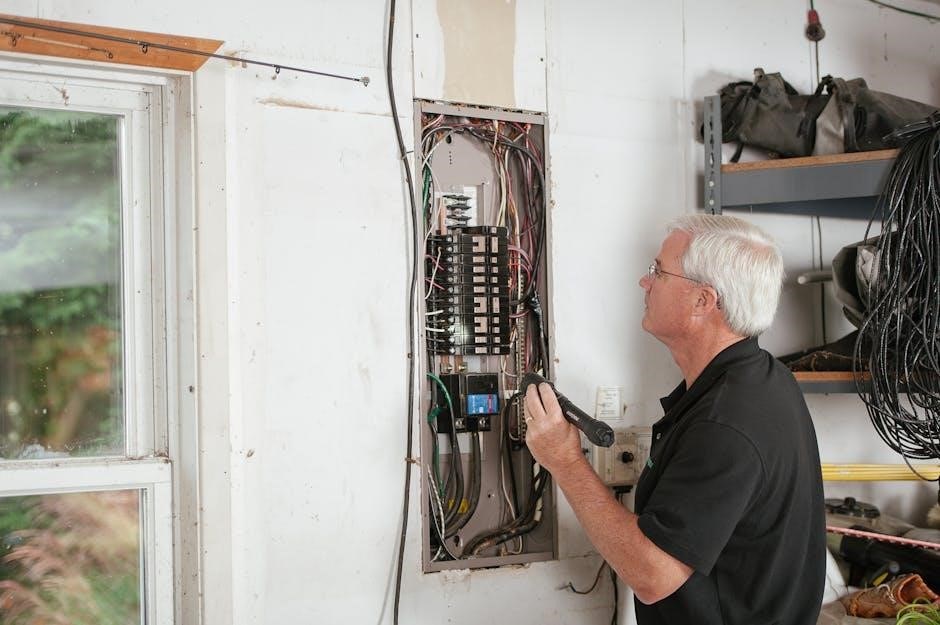
Configuring Fan Settings
Use fan control software to adjust speed‚ lighting‚ and other settings. Configure RGB effects and synchronize colors for a personalized look. Set custom fan curves for optimal performance.
5.1 Using Fan Control Software
Fan control software allows users to customize fan settings for optimal performance and noise levels. Install and launch the software‚ then connect your Bitspower fan to the system. Use the interface to adjust RPM settings‚ creating custom fan curves based on temperature readings. Enable features like PWM control for dynamic speed adjustments. Configure RGB lighting settings to match your system’s aesthetic. Utilize monitoring tools to track fan performance and system temperatures in real-time. Save profiles for different usage scenarios‚ such as gaming or idle modes. Ensure software updates are installed for the latest features and compatibility. This step ensures your Bitspower fan operates efficiently and silently‚ tailored to your specific needs.
5.2 Adjusting Speed and Lighting Settings
Adjusting fan speed and lighting settings enhances customization and system performance. Use PWM control to set fan speeds based on temperature or performance needs. Access lighting settings through software or hardware controls to customize RGB effects. Select from predefined modes or create unique lighting profiles. Synchronize lighting with other components for a cohesive aesthetic. Adjust brightness and color schemes to match your system’s theme. Fine-tune fan curves to balance noise and cooling efficiency. Ensure lighting settings are saved for consistent operation. These adjustments optimize both performance and visual appeal‚ allowing you to tailor your setup to specific preferences or operational demands.
Troubleshooting Common Issues
Identify and resolve common issues like fan malfunction or connectivity problems by checking power connections and consulting the manual for specific troubleshooting steps and solutions.
6.1 Diagnosing Fan Malfunction
Start by visually inspecting the fan for damage or dust buildup‚ which can hinder performance. Check for unusual noises or vibrations‚ as these may indicate improper installation or worn-out bearings. Verify that all power and RGB connectors are securely attached to the motherboard or fan hub. If the fan does not spin‚ ensure the power cable is connected correctly and the motherboard or controller is functioning properly. For PWM or RGB fans‚ use software tools to test fan control signals. If issues persist‚ consult the user manual for troubleshooting specific to your Bitspower fan model. Diagnosing early helps prevent further damage or system instability.
6.2 Resolving Connection Problems
If the fan fails to connect‚ first check the power and data cables for damage or misalignment. Ensure all connectors are securely plugged into the correct ports on the motherboard or fan hub. For RGB fans‚ verify that the DRGB header is connected to a compatible 5V 3-pin header. If using a PWM fan‚ confirm the 4-pin header is properly seated. Restart your system to ensure all connections are recognized. If issues persist‚ try swapping cables or ports to isolate the problem. Refer to the user manual for specific pin configurations and compatibility. Resolving connection issues promptly ensures optimal fan performance and system stability. Always follow proper installation guidelines to avoid damage to components.

Maintenance and Upkeep
Regularly clean the fan blades and housing to prevent dust buildup‚ ensuring optimal airflow and performance. Avoid harsh chemicals and ensure connections remain secure for longevity.
7.1 Cleaning the Fan for Optimal Performance
To maintain peak performance‚ regularly clean your Bitspower fan by turning off the power and gently removing dust with compressed air. Avoid harsh chemicals‚ as they may damage the fan or its finish. For stubborn dirt‚ use a soft cloth lightly dampened with water‚ but ensure no moisture enters internal components. Inspect and clean the fan blades‚ housing‚ and connectors to prevent dust buildup‚ which can reduce airflow and efficiency. Cleaning every 1-3 months is recommended‚ depending on usage and environment. Proper maintenance ensures your Bitspower fan operates smoothly‚ delivers consistent cooling‚ and prolongs its lifespan.
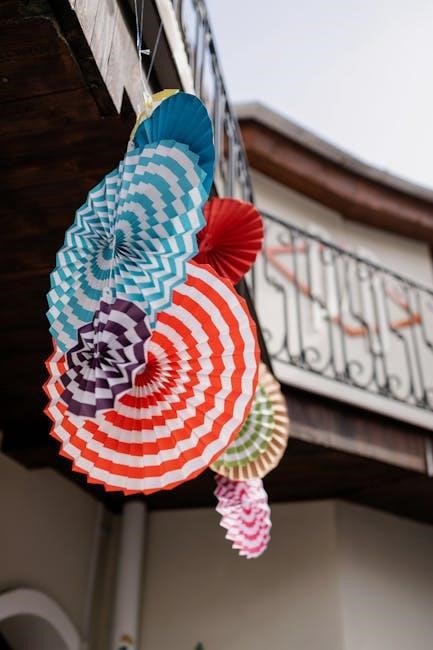
7.2 Ensuring Longevity of the Fan
To ensure the longevity of your Bitspower fan‚ proper installation and maintenance are essential. Avoid exposing the fan to physical stress or extreme temperatures‚ as this can damage the motor or bearings. Regularly cleaning the fan blades and housing prevents dust buildup‚ which can reduce efficiency and lifespan. Secure all cables to prevent tangling or damage‚ and use cable ties for organized management. For PWM fans‚ use a compatible controller to avoid voltage fluctuations. Ensure the fan is mounted on a stable surface to minimize vibration. Regularly inspect the fan for worn parts and replace them if necessary. By following these guidelines‚ you can extend the lifespan of your Bitspower fan and maintain its performance over time.
Advanced Installation Tips
For advanced setups‚ optimize airflow by strategically placing fans‚ use PWM for speed control‚ and manage cables neatly. This enhances cooling efficiency and system aesthetics.
8.1 Optimizing Airflow in Your System
Optimizing airflow is crucial for maintaining efficient cooling and system performance. Start by strategically placing Bitspower fans in key areas such as the front‚ top‚ or rear of the case to ensure a balanced intake and exhaust flow. Use high-quality PWM fans for precise speed control‚ allowing the system to adapt to temperature changes without unnecessary noise. Ensure proper cable management to avoid airflow obstruction‚ and consider using radiators or heat exchangers for advanced cooling setups. Regularly clean dust filters and vents to maintain unimpeded airflow. By carefully planning and executing your fan configuration‚ you can significantly improve system efficiency‚ reduce temperatures‚ and extend component longevity.
8.2 Cable Management Best Practices
Proper cable management is essential for maintaining a clean and efficient system. Use cable ties or adhesive-backed cable clips to secure fan power cables‚ RGB connectors‚ and other wires neatly behind the case or along the chassis rails. This prevents airflow obstruction and reduces dust accumulation. Route cables away from moving parts like fans and HDDs to avoid interference. Utilize modular power supplies to minimize excess cables. For RGB lighting‚ ensure the DRGB headers are securely connected and routed separately from PWM fan cables to prevent signal interference. Keep all cables organized and bundled‚ avoiding tight bends or pinching. A well-managed cable setup enhances airflow‚ improves system aesthetics‚ and reduces the risk of component damage.
Proper installation of Bitspower fans ensures optimal cooling‚ enhancing system performance and reliability. Follow these steps for a seamless setup‚ leading to improved efficiency and durability.
9.1 Final Checklist for Successful Installation
Ensure the fan is properly mounted and secured to the case for optimal airflow. Verify all power and RGB connections are securely attached to the motherboard or hub. Test the fan’s rotation and lighting functionality before closing the case. Confirm that all screws and brackets are tightly fastened to prevent vibration. Use fan control software to set desired speed and lighting profiles. Double-check cable management for a clean and organized build. Ensure the fan’s airflow path is unobstructed for maximum cooling efficiency. Review the installation manual for any specific recommendations or precautions. Finally‚ power on the system and monitor the fan’s performance to ensure everything operates smoothly.
9.2 Benefits of Proper Fan Installation

Proper installation of Bitspower fans ensures optimal cooling performance‚ reducing component temperatures and enhancing system reliability. It minimizes vibrations and noise‚ promoting a quieter computing environment. Correctly installed fans improve airflow efficiency‚ which is crucial for maintaining optimal thermal levels‚ especially in high-performance systems. Additionally‚ proper installation prevents damage to the fan or other components‚ ensuring longevity and consistent operation. Features like RGB lighting and PWM control function seamlessly when installed correctly‚ offering aesthetic and performance benefits. A well-installed fan also supports better cable management‚ contributing to a cleaner and more organized build. Overall‚ proper installation maximizes the fan’s potential‚ delivering enhanced cooling and system stability.
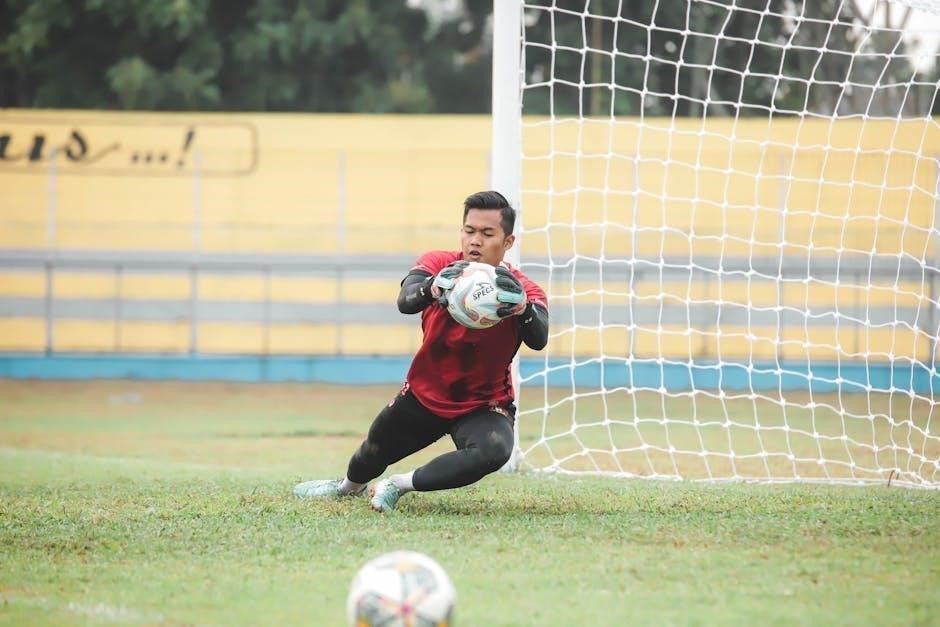
Additional Resources
For detailed guides‚ visit the official Bitspower website or download manuals from their support page. Additional resources include QR codes on packaging for easy access to instructions and troubleshooting tips.
10.1 Where to Find Detailed Manuals
Detailed manuals for Bitspower fans can be found on the official Bitspower website or through the product’s packaging‚ which often includes QR codes linking to downloadable guides. Additionally‚ authorized retailers and online marketplaces provide access to these manuals‚ ensuring users can easily find installation instructions tailored to their specific fan models. These resources cover technical specifications‚ step-by-step installation processes‚ and troubleshooting tips‚ making them invaluable for both novice and experienced users. By referencing these manuals‚ users ensure a smooth and successful installation process for their Bitspower fans.
10.2 Contacting Bitspower Support
For any inquiries or assistance with Bitspower fan installation‚ users can contact Bitspower support through their official website. The website provides a dedicated support section with contact forms‚ email addresses‚ and phone numbers. Additionally‚ users can submit support tickets directly through the site for detailed technical assistance. Many Bitspower products also include QR codes linking to installation guides and troubleshooting resources. For immediate help‚ customers can reach out via email or through social media platforms. Ensure to have the product model and serial number ready for faster resolution. Bitspower support is available to address installation challenges‚ warranty inquiries‚ and technical issues‚ ensuring a smooth experience for all users.
